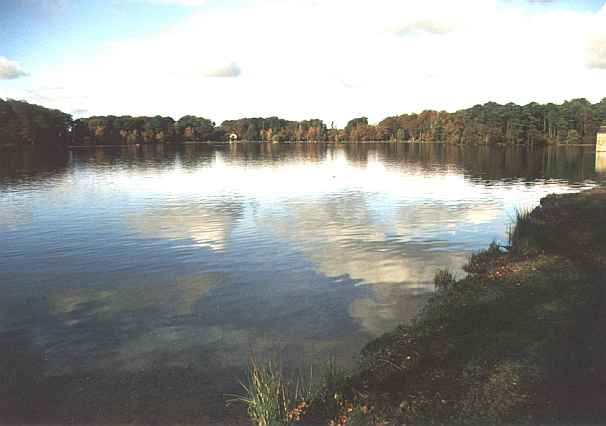Hayton township has a pleasantly situated village, 2½
miles S.W. of Brampton, commanding an extensive view of the country, north and west. Here
is a circular eminence, called Castle Hill, about 12 feet high, 100 feet in diameter at
the top, and depressed in the middle. This probably has been a bulwark of defence to Edmond
Castle, distant about one mile N.W. of Hayton, and now the much improved and beautiful
seat of Thomas Henry Graham, Esq. At the east end of the village is Stone House,
the neat residence of colonel Whinyates, but the property of Sir Hew Dalrymple Ross,
K.C.B.1 &c.
The Church, dedicated to St. Mary, is a neat
edifice, built in 1780, with a small square tower, and is calculated to held about 100
persons. The chancel was rebuilt in 1842 chiefly at the expense at T. H. Graham Esq., who
is the principal landowner of this township. The living is a perpetual curacy, in the gift
of the dean and chapter of Carlisle, and incumbency of the Rev. George Topping. Previous
to the commutation, the tithes were leased out for 21 years, by the dean and chapter,
reserving the annual payment of 17 eskeps2 of oatmeal; and the
lessee covenanted to pay the curate £5 yearly, and to repair the chancel; and ancient
custom of the lessee of the small tithes giving the inhabitants 48 quarts of ale (viz. 12
on the feast of St. Andrew, 12 at Candlemas, and 24 at Easter) has been discontinued. The
earl of Carlisle is the impropriator of a moiety of the corn tithes of Talkin, and the
vicar of Brampton owns the hay tithes, and one moiety of the small tithes of the same
township; but all are now commuted for a rent charge on the land. In 1751 and 1757, the
curacy received two augmentations from queen Anne's bounty, amounting to £400, with which
land was purchased at Hayton, and added to the ancient glebe - making altogether about 40
acres. The benefice is now worth about £127 per annum. In the village is a Wesleyan
chapel. The School at Hayton, where about 100 children are instructed, is
principally supported by Thomas Henry Graham, Esq., and a school at Talkin is endowed with
six acres of land bequeathed in 1798, by Mr. John Melburne - now let for about £10 a
year; besides which, T. H. Graham, Esq. contributes £2 2s., and the Rev G. Topping £1
yearly. About 1792, two human skeletons, one a male and the other a female, were dug up in
the Long Moss, on the south side of this parish. "They appeared to have been wrapped
up in blankets, but no coffin." * At the south end of the same moss is a beautiful
conical hill, called Lazon, or Glasson Castle, which for several years, has
been planted with forest trees. In 1701, the improved common lands of the parish were
enfranchised for the yearly rent of £23, payable to the lord of the manor.
Corby (Little) is a small village and township, six miles
west by north of Carlisle. It is situate at the confluence of the rivers Eden and Irthing,
and is chiefly the property of P. H. Howard, Esq., and Mr. George Irthing, the former of
whom is lord of the manor. The customary tenants pay a 20d. fine on the death of the lord,
and two years value on change of tenant. Population in 1841, 283.
 Faugh and Fenton are two small hamlets, the former 1½, and the latter
one mile south of Hayton, containing 339 inhabitants, including the hamlet of How,
half-a-mile S.S.W. of Hayton. The soil belongs chiefly to the earl of Carlisle, John
Ramshay, Esq., and a few resident yeomen.
Faugh and Fenton are two small hamlets, the former 1½, and the latter
one mile south of Hayton, containing 339 inhabitants, including the hamlet of How,
half-a-mile S.S.W. of Hayton. The soil belongs chiefly to the earl of Carlisle, John
Ramshay, Esq., and a few resident yeomen.
Talkin township has a village 2½ miles E. by S. of Hayton, and contains 344 inhabitants. Here are coal mines, limestone and freestone quarries, and also a small lake, called Talkin Tarn, well stocked with fish. About the year 1790, three large buckles, or clasps, of gold, were found near Netherton farm, where a battle was fought by lord Hunsden3. They measured 3 or 4 inches in diameter, and about 1½ inch in thickness, and were sold for upwards of £30. A neat Church, or Chapel of Ease has lately been erected here by T. H. Graham, Esq., (the stone being given by the earl of Carlisle), at the cost of about £800. It has not yet been endowed, and the present officiating clergyman is the Rev. John Lowthian, curate of the incumbent of Hayton. The school here is already noticed. The earl of Carlisle is the principal landowner and lord of the manor.
* Hutchinson
Mannix & Whellan, History, Gazetteer and Directory of Cumberland, 1847